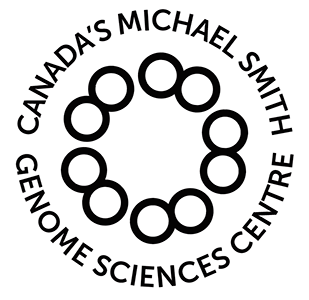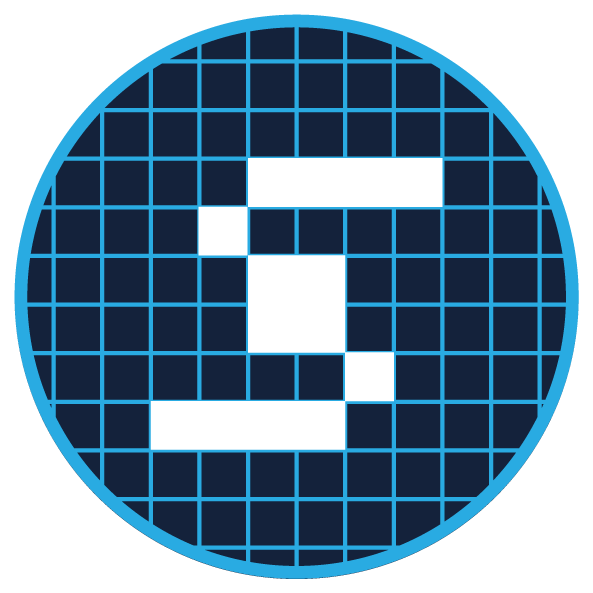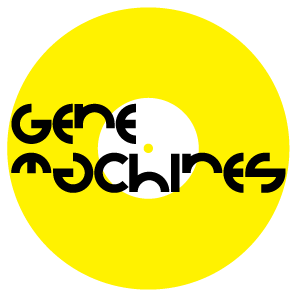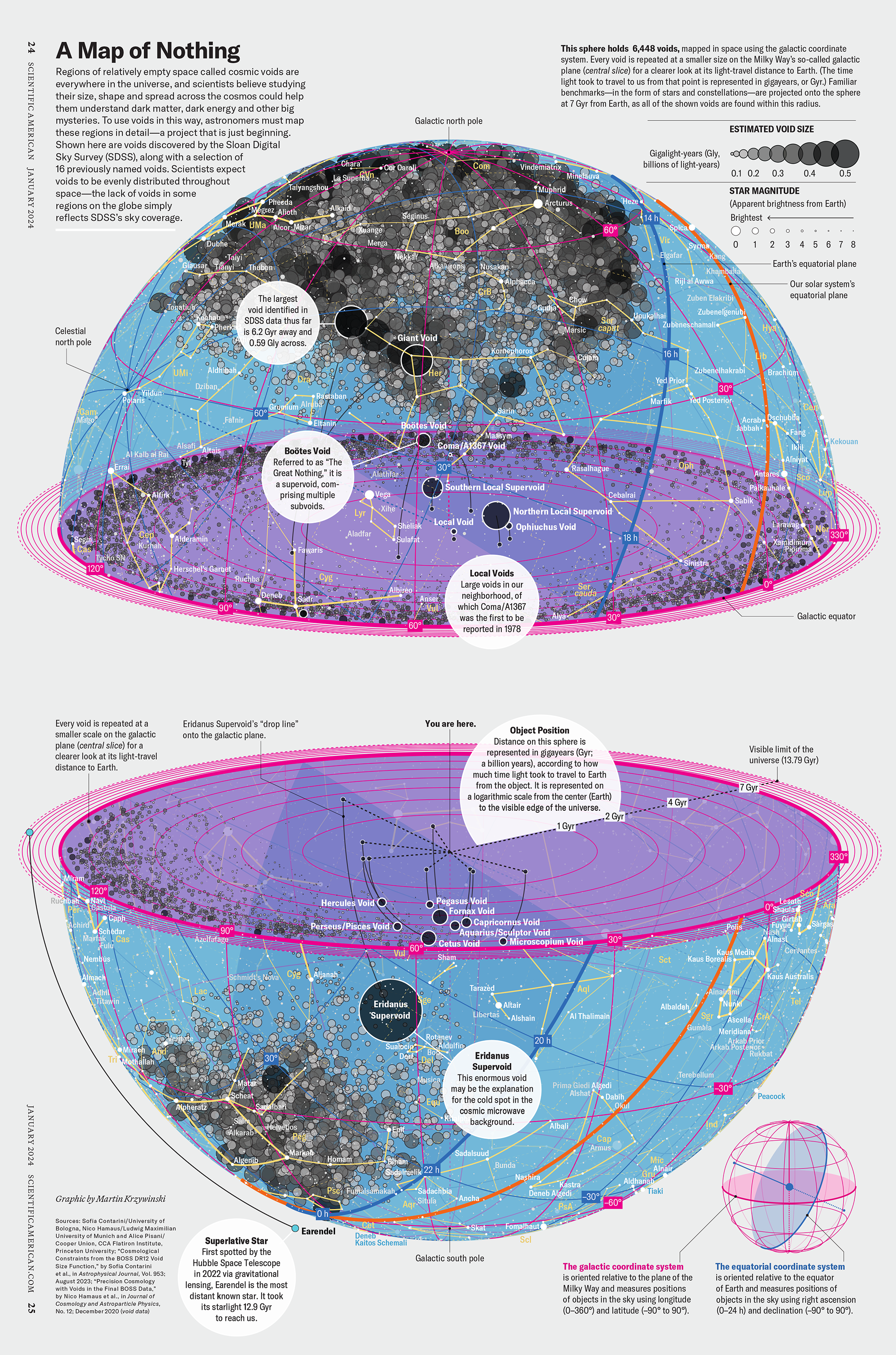There is no sound in space, but there is music (and genomes)

contents
The Sanctuary Project is a Lunar vault for humanity, inspired by projects like the Golden Record and engraved on ten 10 cm sapphire discs. The discs include math, science, maps, poetry, art and a couple of jokes.
Oh, and a backup of our species. Push to reboot.
A couple of years ago, I reached out to Ulf Nygaard, the principal and founder of Flunk, and invited him to contribute a song to Sanctuary. Something that would sound great on the Moon.
“I'll make something perfect”, he said.
And then he did.
I sat down for drinks with Flunk in Oslo. We celebrated Hitchmas. Make it a double — we were going to go to the Moon.
“Ulf, why is this album called Chemistry and Math?” I asked about Flunk's latest album at the time. And perhaps one with the most unusual title.
I will never forget his answer.
“Sitting in a cafe, I saw two people crossing the street from opposite sides. As they passed each other in the middle, they recognized each other and started talking.”
“In the end, it's just chemistry and math.”
To me, this was the Mariana trench of deep romantic statments. I knew then Flunk was the perfect match for this project.
Ok, I knew thew before too.
On May 28th, Flunk released their new album History of Everything Every and Track 1 is Down Here / Moon Above.
While the original plan was for the song to make it to the Moon before its debut on Earth, this didn't quite happen. We're still working on the Moon angle.
Yes, I do science and make art and I love Flunk, but what does all this have to do with me.
Well, four of the Sanctuary discs contain the backup for humanity: fully sequenced genomes of a woman and man. The individuals were randomly and anonymously selected from our Healthy Aging Study lead by Dr. Angela Brooks-Wilson. The DNA was sequenced at Canada's Michael Smith Genome Sciences Center.
I designed and created the content for these discs, which not only include the genomes but also the proteome (gene protein sequences) and the chemical structures of associated metabolites. The genomes include about 10 million SNPs to represent all our variation (imagine me waving my hands around at this point). The SNPs are encoded inline with the sequence, so you do not actually know what the original sequenced genome was — at each position of variation you have a choice of bases.
The discs also contain art and snippes of culture (some pop and some not). It's basically a giant cosmic Easter egg.
Each disc is a 10 cm diameter sapphire wafer containing 3 billion 1-bit pixels.
They're thermodynamically inert and will last forever. Roughly speaking.
You can pixel-peep and browse each of the discs.
To me, these discs are a love poem to the Universe. Or a post card — I love post cards.

The four genome discs look like this.




You know you're done reading when you get to the end.

The first disc, which contains roughly the first half of the female genome, also contains instructions for decoding, along with a few of our learned lessons (Nuremberg Code and Declaration of Helsinki) that remind the reader not to experiment carelessly with the information.

Peeping a bit closer, these instructions take shape. the long black strip is a spectrogram encoding of Flunk's song. For a closeup of the decoding instructions for the discs, see the Instructions section.

music for space
Flunk's song is encoded using 128 mel 3-bit spectrogram. This takes 11,688 × 384 1-bit pixels on the discs. For details see the Sonogram section.

poster for space
A 512 mel 1-bit encoding of the full History of Everything Ever album. Great for your wall or Moon patch.

Propensity score matching
I don’t have good luck in the match points. —Rafael Nadal, Spanish tennis player
In many experimental designs, we need to keep in mind the possibility of confounding variables, which may give rise to bias in the estimate of the treatment effect.

If the control and experimental groups aren't matched (or, roughly, similar enough), this bias can arise.
Sometimes this can be dealt with by randomizing, which on average can balance this effect out. When randomization is not possible, propensity score matching is an excellent strategy to match control and experimental groups.
Kurz, C.F., Krzywinski, M. & Altman, N. (2024) Points of significance: Propensity score matching. Nat. Methods 21:1770–1772.
Nasa to send our human genome discs to the Moon
We'd like to say a ‘cosmic hello’: mathematics, culture, palaeontology, art and science, and ... human genomes.
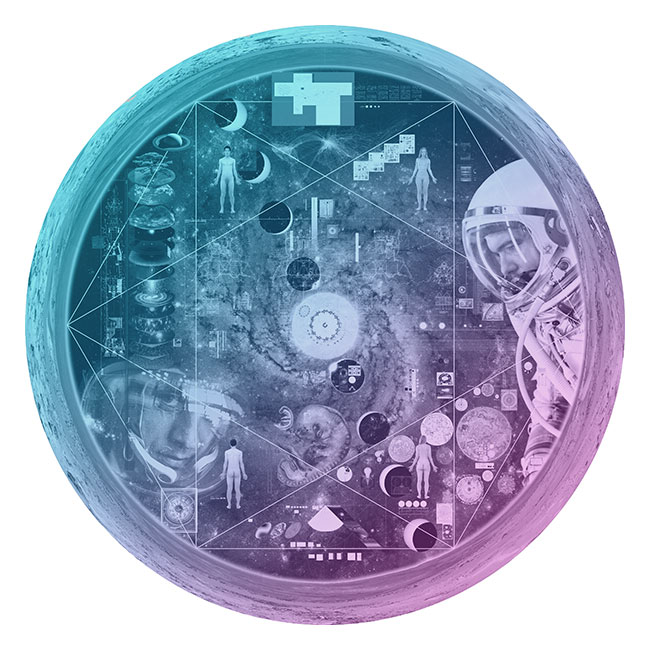

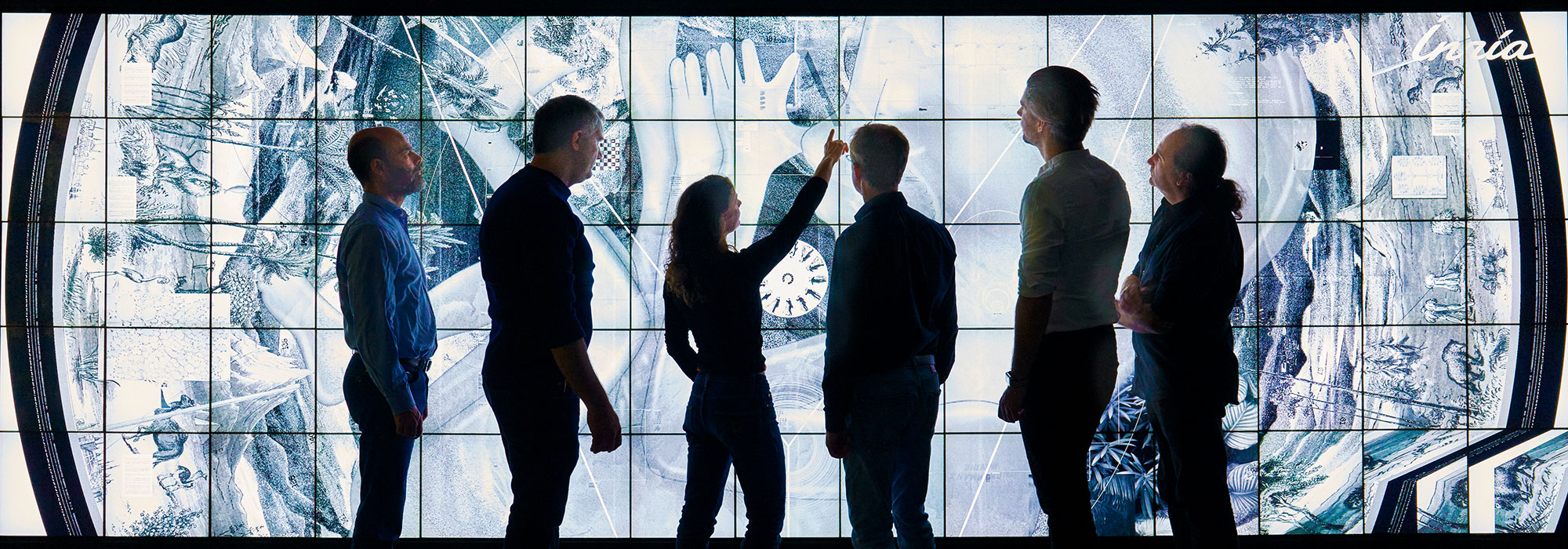
Comparing classifier performance with baselines
All animals are equal, but some animals are more equal than others. —George Orwell
This month, we will illustrate the importance of establishing a baseline performance level.
Baselines are typically generated independently for each dataset using very simple models. Their role is to set the minimum level of acceptable performance and help with comparing relative improvements in performance of other models.
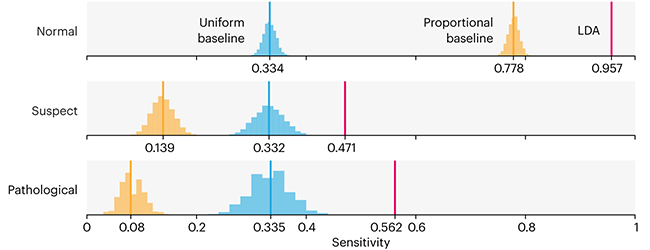
Unfortunately, baselines are often overlooked and, in the presence of a class imbalance, must be established with care.
Megahed, F.M, Chen, Y-J., Jones-Farmer, A., Rigdon, S.E., Krzywinski, M. & Altman, N. (2024) Points of significance: Comparing classifier performance with baselines. Nat. Methods 21:546–548.
Happy 2024 π Day—
sunflowers ho!
Celebrate π Day (March 14th) and dig into the digit garden. Let's grow something.
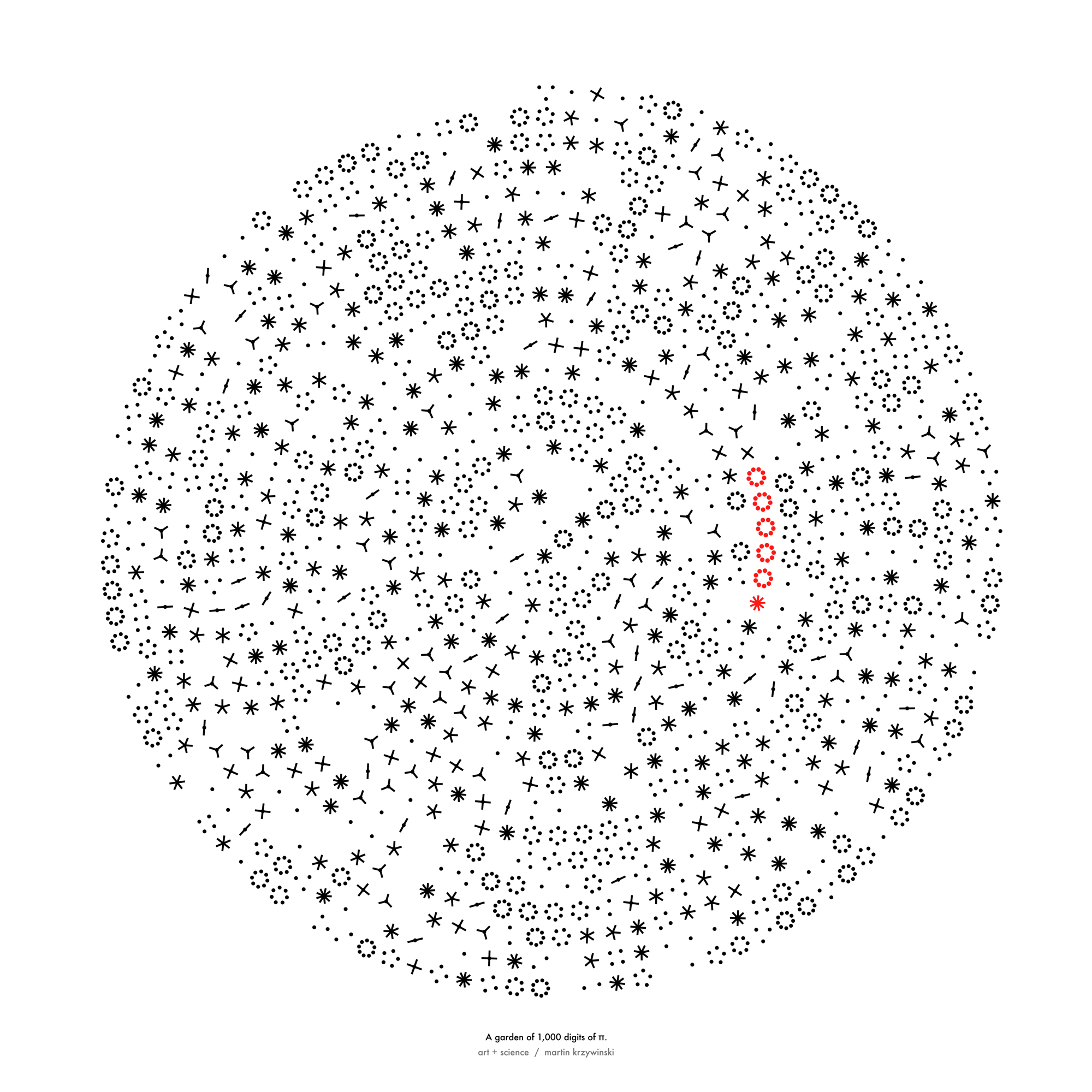
How Analyzing Cosmic Nothing Might Explain Everything
Huge empty areas of the universe called voids could help solve the greatest mysteries in the cosmos.
My graphic accompanying How Analyzing Cosmic Nothing Might Explain Everything in the January 2024 issue of Scientific American depicts the entire Universe in a two-page spread — full of nothing.
The graphic uses the latest data from SDSS 12 and is an update to my Superclusters and Voids poster.
Michael Lemonick (editor) explains on the graphic:
“Regions of relatively empty space called cosmic voids are everywhere in the universe, and scientists believe studying their size, shape and spread across the cosmos could help them understand dark matter, dark energy and other big mysteries.
To use voids in this way, astronomers must map these regions in detail—a project that is just beginning.
Shown here are voids discovered by the Sloan Digital Sky Survey (SDSS), along with a selection of 16 previously named voids. Scientists expect voids to be evenly distributed throughout space—the lack of voids in some regions on the globe simply reflects SDSS’s sky coverage.”
voids
Sofia Contarini, Alice Pisani, Nico Hamaus, Federico Marulli Lauro Moscardini & Marco Baldi (2023) Cosmological Constraints from the BOSS DR12 Void Size Function Astrophysical Journal 953:46.
Nico Hamaus, Alice Pisani, Jin-Ah Choi, Guilhem Lavaux, Benjamin D. Wandelt & Jochen Weller (2020) Journal of Cosmology and Astroparticle Physics 2020:023.
Sloan Digital Sky Survey Data Release 12
Alan MacRobert (Sky & Telescope), Paulina Rowicka/Martin Krzywinski (revisions & Microscopium)
Hoffleit & Warren Jr. (1991) The Bright Star Catalog, 5th Revised Edition (Preliminary Version).
H0 = 67.4 km/(Mpc·s), Ωm = 0.315, Ωv = 0.685. Planck collaboration Planck 2018 results. VI. Cosmological parameters (2018).
constellation figures
stars
cosmology
Error in predictor variables
It is the mark of an educated mind to rest satisfied with the degree of precision that the nature of the subject admits and not to seek exactness where only an approximation is possible. —Aristotle
In regression, the predictors are (typically) assumed to have known values that are measured without error.
Practically, however, predictors are often measured with error. This has a profound (but predictable) effect on the estimates of relationships among variables – the so-called “error in variables” problem.
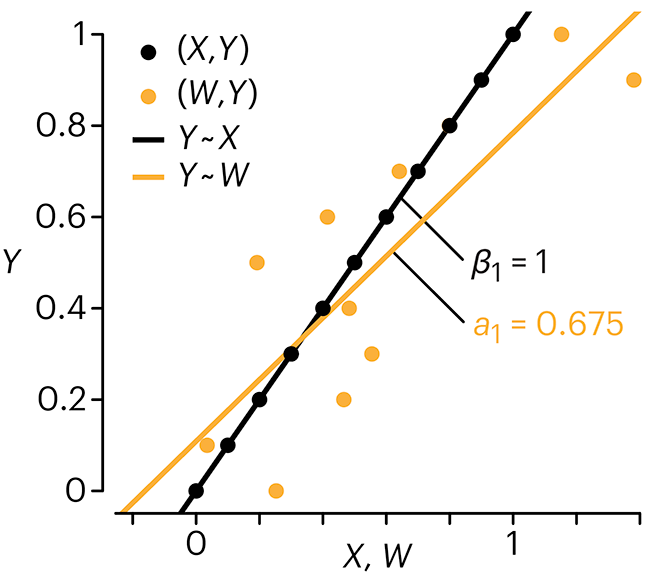
Error in measuring the predictors is often ignored. In this column, we discuss when ignoring this error is harmless and when it can lead to large bias that can leads us to miss important effects.
Altman, N. & Krzywinski, M. (2024) Points of significance: Error in predictor variables. Nat. Methods 21:4–6.
Background reading
Altman, N. & Krzywinski, M. (2015) Points of significance: Simple linear regression. Nat. Methods 12:999–1000.
Lever, J., Krzywinski, M. & Altman, N. (2016) Points of significance: Logistic regression. Nat. Methods 13:541–542 (2016).
Das, K., Krzywinski, M. & Altman, N. (2019) Points of significance: Quantile regression. Nat. Methods 16:451–452.
